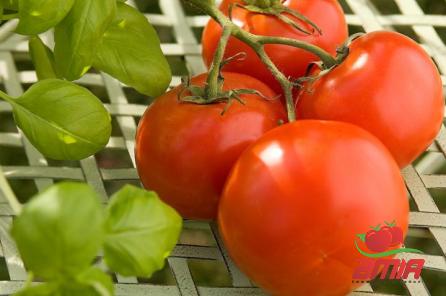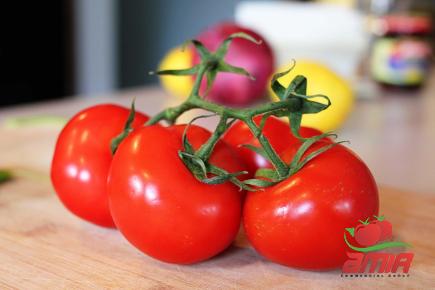Do you have a surplus of juicy, ripe tomatoes and are wondering what to do with them? Look no further than making your own homemade tomato paste using a dehydrator. Not only is it a fantastic way to preserve the flavors of summer, but it also allows you to enjoy the goodness of tomatoes all year round. In this comprehensive guide, we will walk you through the process of making homemade tomato paste using a dehydrator, from selecting the best tomatoes to storing your finished product. Chapter 1: Why Make Homemade Tomato Paste? Homemade tomato paste is a versatile ingredient that can elevate the flavor of countless dishes, from pasta sauces to soups and stews. By making your own tomato paste, you have complete control over the ingredients and can ensure that it is free from additives and preservatives.

.
 Additionally, homemade tomato paste allows you to customize the consistency and flavor profile to suit your preferences. Chapter 2: Choosing the Right Tomatoes The key to making delicious homemade tomato paste lies in selecting the right tomatoes. Look for ripe, meaty tomatoes with a deep red color, such as Roma, San Marzano, or Amish Paste varieties. These tomatoes have a high flesh-to-seed ratio, making them ideal for making tomato paste. If possible, opt for organic tomatoes to avoid any pesticides or chemicals in your homemade paste. Chapter 3: Preparing the Tomatoes Before you can start dehydrating your tomatoes, you’ll need to prepare them properly. Wash the tomatoes thoroughly and remove any stems or blemishes. If desired, you can peel the tomatoes by blanching them in boiling water for a few seconds and then transferring them to an ice bath to easily remove the skins. Once peeled, cut the tomatoes into quarters or halves, depending on their size. Chapter 4: Dehydrating the Tomatoes Now comes the fun part – dehydrating the tomatoes to make tomato paste. Arrange the prepared tomato pieces on the dehydrator trays, making sure to leave space between each piece for proper air circulation. Set the dehydrator to a low temperature (around 135°F) and let the tomatoes dry for 12-24 hours, or until they are completely dry and leathery to the touch. Chapter 5: Grinding the Dehydrated Tomatoes Once the tomatoes are fully dehydrated, it’s time to grind them into a fine powder to make tomato paste. You can use a food processor, blender, or spice grinder to achieve the desired consistency. Grind the dehydrated tomatoes in small batches until you have a smooth powder. If you prefer a chunkier paste, pulse the tomatoes for a shorter amount of time. Chapter 6: Storing Homemade Tomato Paste After grinding the dehydrated tomatoes, transfer the homemade tomato paste to an airtight container or glass jar for storage. Store the tomato paste in a cool, dark place such as a pantry or cupboard.
Additionally, homemade tomato paste allows you to customize the consistency and flavor profile to suit your preferences. Chapter 2: Choosing the Right Tomatoes The key to making delicious homemade tomato paste lies in selecting the right tomatoes. Look for ripe, meaty tomatoes with a deep red color, such as Roma, San Marzano, or Amish Paste varieties. These tomatoes have a high flesh-to-seed ratio, making them ideal for making tomato paste. If possible, opt for organic tomatoes to avoid any pesticides or chemicals in your homemade paste. Chapter 3: Preparing the Tomatoes Before you can start dehydrating your tomatoes, you’ll need to prepare them properly. Wash the tomatoes thoroughly and remove any stems or blemishes. If desired, you can peel the tomatoes by blanching them in boiling water for a few seconds and then transferring them to an ice bath to easily remove the skins. Once peeled, cut the tomatoes into quarters or halves, depending on their size. Chapter 4: Dehydrating the Tomatoes Now comes the fun part – dehydrating the tomatoes to make tomato paste. Arrange the prepared tomato pieces on the dehydrator trays, making sure to leave space between each piece for proper air circulation. Set the dehydrator to a low temperature (around 135°F) and let the tomatoes dry for 12-24 hours, or until they are completely dry and leathery to the touch. Chapter 5: Grinding the Dehydrated Tomatoes Once the tomatoes are fully dehydrated, it’s time to grind them into a fine powder to make tomato paste. You can use a food processor, blender, or spice grinder to achieve the desired consistency. Grind the dehydrated tomatoes in small batches until you have a smooth powder. If you prefer a chunkier paste, pulse the tomatoes for a shorter amount of time. Chapter 6: Storing Homemade Tomato Paste After grinding the dehydrated tomatoes, transfer the homemade tomato paste to an airtight container or glass jar for storage. Store the tomato paste in a cool, dark place such as a pantry or cupboard.
..
 Alternatively, you can freeze the tomato paste in ice cube trays for easy portioning and use in recipes. Properly stored, homemade tomato paste can last for up to a year. Chapter 7: Using Homemade Tomato Paste Homemade tomato paste adds depth and richness to a wide variety of dishes. Use it as a base for pasta sauces, soups, stews, and marinades, or mix it with herbs and spices to create a flavorful spread for sandwiches or pizzas. You can also dilute the tomato paste with water or broth to make a quick and easy tomato sauce for pasta dishes. Chapter 8: Tips and Tricks for Making Homemade Tomato Paste – Experiment with different tomato varieties to find the flavor profile you prefer. – Add herbs and spices such as garlic, basil, or oregano to customize the taste of your tomato paste. – Consider sun-drying the tomatoes if you don’t have a dehydrator, although this method may take longer. – To prevent clumping, add a small amount of olive oil to the homemade tomato paste before storing. Conclusion: Making homemade tomato paste using a dehydrator is a rewarding and delicious way to preserve the flavors of fresh tomatoes. With just a few simple steps, you can create a versatile ingredient that will enhance your cooking and add a burst of flavor to your favorite dishes. So gather your ripe tomatoes, fire up your dehydrator, and start making your own homemade tomato paste today. Your taste buds will thank you! Chapter 1: Why Make Homemade Tomato Paste? Homemade tomato paste is a versatile ingredient that can elevate the flavor of countless dishes, from pasta sauces to soups and stews. By making your own tomato paste, you have complete control over the ingredients and can ensure that it is free from additives and preservatives. Additionally, homemade tomato paste allows you to customize the consistency and flavor profile to suit your preferences. Chapter 2: Choosing the Right Tomatoes The key to making delicious homemade tomato paste lies in selecting the right tomatoes. Look for ripe, meaty tomatoes with a deep red color, such as Roma, San Marzano, or Amish Paste varieties. These tomatoes have a high flesh-to-seed ratio, making them ideal for making tomato paste. If possible, opt for organic tomatoes to avoid any pesticides or chemicals in your homemade paste. Chapter 3: Preparing the Tomatoes Before you can start dehydrating your tomatoes, you’ll need to prepare them properly.
Alternatively, you can freeze the tomato paste in ice cube trays for easy portioning and use in recipes. Properly stored, homemade tomato paste can last for up to a year. Chapter 7: Using Homemade Tomato Paste Homemade tomato paste adds depth and richness to a wide variety of dishes. Use it as a base for pasta sauces, soups, stews, and marinades, or mix it with herbs and spices to create a flavorful spread for sandwiches or pizzas. You can also dilute the tomato paste with water or broth to make a quick and easy tomato sauce for pasta dishes. Chapter 8: Tips and Tricks for Making Homemade Tomato Paste – Experiment with different tomato varieties to find the flavor profile you prefer. – Add herbs and spices such as garlic, basil, or oregano to customize the taste of your tomato paste. – Consider sun-drying the tomatoes if you don’t have a dehydrator, although this method may take longer. – To prevent clumping, add a small amount of olive oil to the homemade tomato paste before storing. Conclusion: Making homemade tomato paste using a dehydrator is a rewarding and delicious way to preserve the flavors of fresh tomatoes. With just a few simple steps, you can create a versatile ingredient that will enhance your cooking and add a burst of flavor to your favorite dishes. So gather your ripe tomatoes, fire up your dehydrator, and start making your own homemade tomato paste today. Your taste buds will thank you! Chapter 1: Why Make Homemade Tomato Paste? Homemade tomato paste is a versatile ingredient that can elevate the flavor of countless dishes, from pasta sauces to soups and stews. By making your own tomato paste, you have complete control over the ingredients and can ensure that it is free from additives and preservatives. Additionally, homemade tomato paste allows you to customize the consistency and flavor profile to suit your preferences. Chapter 2: Choosing the Right Tomatoes The key to making delicious homemade tomato paste lies in selecting the right tomatoes. Look for ripe, meaty tomatoes with a deep red color, such as Roma, San Marzano, or Amish Paste varieties. These tomatoes have a high flesh-to-seed ratio, making them ideal for making tomato paste. If possible, opt for organic tomatoes to avoid any pesticides or chemicals in your homemade paste. Chapter 3: Preparing the Tomatoes Before you can start dehydrating your tomatoes, you’ll need to prepare them properly.
…
 Wash the tomatoes thoroughly and remove any stems or blemishes. If desired, you can peel the tomatoes by blanching them in boiling water for a few seconds and then transferring them to an ice bath to easily remove the skins. Once peeled, cut the tomatoes into quarters or halves, depending on their size. Chapter 4: Dehydrating the Tomatoes Now comes the fun part – dehydrating the tomatoes to make tomato paste. Arrange the prepared tomato pieces on the dehydrator trays, making sure to leave space between each piece for proper air circulation. Set the dehydrator to a low temperature (around 135°F) and let the tomatoes dry for 12-24 hours, or until they are completely dry and leathery to the touch. Chapter 5: Grinding the Dehydrated Tomatoes Once the tomatoes are fully dehydrated, it’s time to grind them into a fine powder to make tomato paste. You can use a food processor, blender, or spice grinder to achieve the desired consistency. Grind the dehydrated tomatoes in small batches until you have a smooth powder. If you prefer a chunkier paste, pulse the tomatoes for a shorter amount of time. Chapter 6: Storing Homemade Tomato Paste After grinding the dehydrated tomatoes, transfer the homemade tomato paste to an airtight container or glass jar for storage. Store the tomato paste in a cool, dark place such as a pantry or cupboard. Alternatively, you can freeze the tomato paste in ice cube trays for easy portioning and use in recipes. Properly stored, homemade tomato paste can last for up to a year. Chapter 7: Using Homemade Tomato Paste Homemade tomato paste adds depth and richness to a wide variety of dishes. Use it as a base for pasta sauces, soups, stews, and marinades, or mix it with herbs and spices to create a flavorful spread for sandwiches or pizzas. You can also dilute the tomato paste with water or broth to make a quick and easy tomato sauce for pasta dishes. Chapter 8: Tips and Tricks for Making Homemade Tomato Paste – Experiment with different tomato varieties to find the flavor profile you prefer. – Add herbs and spices such as garlic, basil, or oregano to customize the taste of your tomato paste. – Consider sun-drying the tomatoes if you don’t have a dehydrator, although this method may take longer. – To prevent clumping, add a small amount of olive oil to the homemade tomato paste before storing. Conclusion: Making homemade tomato paste using a dehydrator is a rewarding and delicious way to preserve the flavors of fresh tomatoes. With just a few simple steps, you can create a versatile ingredient that will enhance your cooking and add a burst of flavor to your favorite dishes. So gather your ripe tomatoes, fire up your dehydrator, and start making your own homemade tomato paste today. Your taste buds will thank you!
Wash the tomatoes thoroughly and remove any stems or blemishes. If desired, you can peel the tomatoes by blanching them in boiling water for a few seconds and then transferring them to an ice bath to easily remove the skins. Once peeled, cut the tomatoes into quarters or halves, depending on their size. Chapter 4: Dehydrating the Tomatoes Now comes the fun part – dehydrating the tomatoes to make tomato paste. Arrange the prepared tomato pieces on the dehydrator trays, making sure to leave space between each piece for proper air circulation. Set the dehydrator to a low temperature (around 135°F) and let the tomatoes dry for 12-24 hours, or until they are completely dry and leathery to the touch. Chapter 5: Grinding the Dehydrated Tomatoes Once the tomatoes are fully dehydrated, it’s time to grind them into a fine powder to make tomato paste. You can use a food processor, blender, or spice grinder to achieve the desired consistency. Grind the dehydrated tomatoes in small batches until you have a smooth powder. If you prefer a chunkier paste, pulse the tomatoes for a shorter amount of time. Chapter 6: Storing Homemade Tomato Paste After grinding the dehydrated tomatoes, transfer the homemade tomato paste to an airtight container or glass jar for storage. Store the tomato paste in a cool, dark place such as a pantry or cupboard. Alternatively, you can freeze the tomato paste in ice cube trays for easy portioning and use in recipes. Properly stored, homemade tomato paste can last for up to a year. Chapter 7: Using Homemade Tomato Paste Homemade tomato paste adds depth and richness to a wide variety of dishes. Use it as a base for pasta sauces, soups, stews, and marinades, or mix it with herbs and spices to create a flavorful spread for sandwiches or pizzas. You can also dilute the tomato paste with water or broth to make a quick and easy tomato sauce for pasta dishes. Chapter 8: Tips and Tricks for Making Homemade Tomato Paste – Experiment with different tomato varieties to find the flavor profile you prefer. – Add herbs and spices such as garlic, basil, or oregano to customize the taste of your tomato paste. – Consider sun-drying the tomatoes if you don’t have a dehydrator, although this method may take longer. – To prevent clumping, add a small amount of olive oil to the homemade tomato paste before storing. Conclusion: Making homemade tomato paste using a dehydrator is a rewarding and delicious way to preserve the flavors of fresh tomatoes. With just a few simple steps, you can create a versatile ingredient that will enhance your cooking and add a burst of flavor to your favorite dishes. So gather your ripe tomatoes, fire up your dehydrator, and start making your own homemade tomato paste today. Your taste buds will thank you!










Your comment submitted.